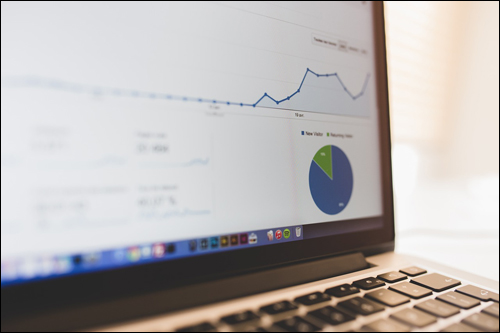 In Part One of our Web Site Traffic Blueprint article series, we explained that the key to creating an automated web traffic generation machine is to use an “expertly configured” WordPress website.
In Part One of our Web Site Traffic Blueprint article series, we explained that the key to creating an automated web traffic generation machine is to use an “expertly configured” WordPress website.
As we also explained, an expertly configured WordPress website or blog is not the same as a professionally-configured WordPress site. An expertly configured WordPress website or blog is a blog that is not only powered by the WordPress CMS, but has also been expertly set up and configured (either by yourself or professionally) to take advantage of the tremendous power, features and functionality of WordPress and how it can be integrated with various services, specifically in areas like search engine optimization, 3rd-party site syndication and analytics.

(With an expertly configured WordPress web site, all you have to do is add great content on a regular basis to automatically start driving traffic!)
Once you have your WordPress site expertly configured and fully set up, all you then need to do to drive more web traffic is publish content on a regular basis.
As outlined in Part 1 of this article series, the components of this automated online traffic system are as follows:
- Setup
- Configure
- Automate
- Optimize
In this article, we discuss the “Setup” phase of the automation process. We will help you understand the best way to start if you don’t have a web presence yet, or if you already have an existing site that may or may not have been built using WordPress.
WordPress Traffic System – Setup
If You Have No Website
If you don’t have a web presence yet, then it’s really quite simple … build a WordPress website!
WordPress is the most powerful, flexible, cost-effective and the easiest to use content management system available. We provide many articles, tips, and tutorials about the benefits and advantages of using WordPress to grow your business online.
For example, to learn just how popular WordPress has become as a platform for building a web presence, see this article: WordPress: Useful Facts And Statistics
After choosing to build your site with WordPress, the next step is to decide which WordPress platform you will use to run your web presence on.
This step is very important as there are two types of WordPress platforms available …
WordPress Hosted Or WordPress Self-Hosted?

(WordPress – Self-Hosted vs Hosted)
WordPress offers users a ”hosted” and a “self-hosted” option.
WordPress.org allows you to download the full-featured WordPress application at no cost and self-host a WordPress site or blog under your own domain name. This is the “self-hosted” WordPress option.
In the “hosted option”, WordPress will host your site for free at WordPress.com. There are, however, a number of limitations on what you can and can’t do with your site when it is hosted for free at WordPress.com.
If you are planning to build a professional business presence online and you want to set up the traffic system described here, then choose the “self-hosted” WordPress version. The benefits of choosing the “self-hosted” option (WordPress.org) far outweigh those of hosting a free blog at WordPress.com. You get to have full control over your web presence and avoid the limitations of the hosted option. Keep in mind that You can overcome the limitations of the free hosting platform by upgrading to a paid option, but then why not start off by hosting a WordPress site on your domain and avoid the hassles of upgrading later?
If You Already Have An Existing Website
If you already have an existing website, first check to see if your web site has been built using WordPress.
If you need help with this step, check this article: The Easy Way To Tell If Your Web Site Was Built Using WP Software
If your blog runs on WordPress, move to the next step, and make sure that your site’s internal settings have been properly configured. We cover this step in more detail in another tutorial.
If your website runs on something other than WordPress software, you have some choices to make.
Take a look at the flowchart below …

(Use this simple flowchart to help you decide where to set up WordPress on your domain)
Basically, you have two choices:
- Replace your existing web site so that your main website is built using WordPress, or
- Keep your existing website and add a WordPress-powered blog. This blog will then be used to drive traffic to your main website.
![]()
If you choose to keep your existing web site and add a WordPress-driven blog, make sure to use the self-hosted version of WordPress, which requires a domain name and webhosting, but allows you to fully configure your blog’s settings and customize the design and style of your existing web site using a suitable theme.
To use WordPress for your main website, install the software in the “root” folder of your domain name (i.e. www.mydomainname.com).
If you have a website, then you will want to install WordPress in a subdirectory of your domain, e.g. www.mydomainname.com/blog (you can name your subdirectory anything you like).
If you already have an existing website that you don’t want to delete or replace with a WordPress site, you can choose to set up your WordPress site or blog on an entirely different domain.
This way:
- mydomainname.com – goes to your existing website
- myotherdomain.com – goes to your WordPress blog
Once you have set up your WordPress site, the next step is to configure it. This step is covered in the next article in the series.

This is the end of Section Two
To read more, click on the link below:
![]()
This tutorial is part of a comprehensive tutorial series aimed at helping site owners learn how to grow their business online inexpensively using a WordPress-powered website or blog and proven marketing strategies that are easy and quick to implement.
Want To Get Automatically Notified When New WordPress Tutorials Get Published? Then Subscribe To Our Site!
***
"Learning WordPress has been a huge stumbling block for me. I've been looking for something that covers absolutely everything but doesn't cost an arm and a leg. Thank you so much ... you have just provided me with what I have been looking for! Truly appreciated!" - Tanya
***